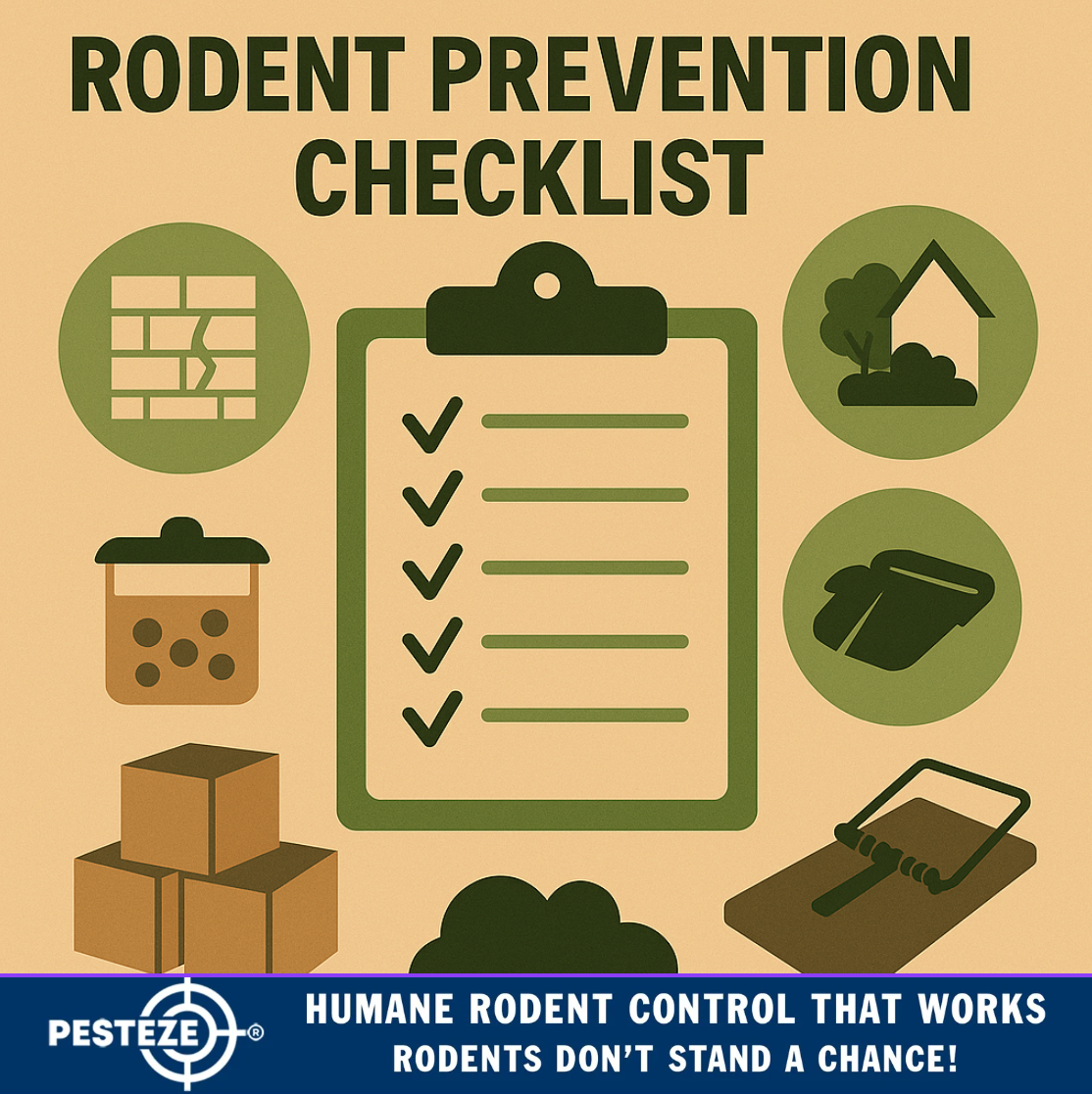HOW TO BUILD A RODENT PREVENTION CHECKLIST

HOW TO BUILD A RODENT PREVENTION CHECKLIST
SUMMARY
Creating a rodent prevention checklist helps homeowners and businesses stay proactive year-round. Follow this simple guide to organize your pest control routine and protect your property.
FEATURES
-
Inspect Entry Points: Identify and seal all cracks, vents, and gaps.
-
Secure Food Sources: Store dry goods and pet food in airtight containers.
-
Eliminate Clutter: Keep storage areas clean and organized.
-
Maintain Landscaping: Trim bushes, remove debris, and clear gutters.
-
Set Monitoring Traps: Place traps in key areas to detect early activity.
-
Schedule Regular Cleanings: Maintain sanitation to discourage nesting.
DESCRIPTION
Rodent prevention doesn’t have to be complicated. A well-structured checklist ensures that every area of your home or business remains protected throughout the year. Start by inspecting for entry points—rodents can squeeze through holes as small as a dime. Focus on sealing cracks around doors, windows, vents, and utility lines using caulk, steel wool, or weatherstripping.
Next, secure all food sources. Rodents are highly attracted to open food, pet kibble, and garbage. Store everything in sealed containers, and make sure waste bins have tight-fitting lids. Regularly cleaning your kitchen, pantry, and dining areas further reduces their attraction.
Decluttering is another key step. Basements, attics, and garages often serve as nesting grounds due to stacked boxes and unused items. Keeping these spaces tidy and limiting hiding spots makes them less appealing. Outside, maintain the yard by trimming vegetation, clearing leaf piles, and ensuring gutters are clean to eliminate shelter opportunities.
Monitoring traps should be part of your checklist, especially in basements, attics, or garages where rodents are likely to enter. Finally, establish a cleaning schedule to keep high-traffic and food-prep areas sanitary. Consistent upkeep not only prevents infestations but also promotes a healthier environment overall.
By following a checklist approach, you can catch small issues early and ensure that rodent control remains a manageable, ongoing task rather than an emergency.
- Saharsh Bansal


Comments 0